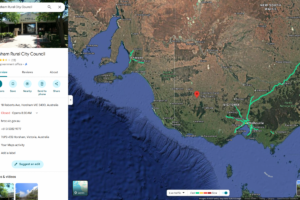
“Teahupo’o was firing, and I’m at Huntington surfing these one-foot expletive deleted waves,” exclaimed Jacob Willcox, capturing the frustration of many surfers in the World Surf League (WSL) Challenger Series. His candid remarks highlight growing dissatisfaction within the surfing community regarding the conditions and management of the series.
Once a tightly controlled narrative akin to a “magnificent Wall of Positive Noise,” the WSL is now facing open criticism from its athletes. This shift in tone is underscored by champions revealing the financial burdens of competing, including paying for their own trophies, and surfers like Willcox openly criticizing the conditions they are forced to endure.
Understanding the Challenger Series
For those familiar with professional surfing, the Championship Tour is the pinnacle, featuring the world’s top surfers competing in prime locations such as Hawaii and Fiji. In contrast, the Challenger Series serves as a proving ground for aspiring surfers, often held in less ideal conditions, like Huntington Beach.
The British newspaper The Guardian recently profiled the grueling nature of the Challenger Series, featuring insights from surfers like Sophie McCulloch and Jacob Willcox. Willcox’s frustration was palpable as he described the disparity between the dream waves of Teahupo’o and the reality of surfing “one-foot shit waves” in Huntington Beach.
Economic and Environmental Impacts
Beyond the surf, the environmental and economic implications of climate change loom large over the sport. The National Oceanic and Atmospheric Administration (NOAA) reports that sea levels are rising at a rate of approximately 2.5mm per year, with projections indicating a 24cm rise along the California coast by 2050.
“The data and analysis revealed that all 31 surf breaks evaluated will see a decrease in surfable conditions at 1 foot of sea level rise. Even more alarming, at 3 feet of sea level rise more than half of all the surf breaks will be significantly diminished or lost completely, assuming no adaptation measures are taken.”
This stark reality is driving initiatives like the Save the Waves Coalition’s recent study, which highlights the economic impact of surfing in Santa Cruz, California. The study, funded by the Ocean Protection Council, reveals that surfing generates $194 million annually for the area.
Efforts to Mitigate Climate Change Effects
In response, activists and engineers are exploring solutions such as artificial reefs to preserve surf breaks and mitigate the effects of rising tides. In Pacifica, California, efforts are underway to construct a reef to protect the coastline and enhance surfing conditions.
UC Santa Cruz professor Gary Griggs emphasizes the urgency of addressing climate change, stating, “We have to acknowledge that the climate is changing. Sea levels are rising, erosion is increasing, and storms, and the strong waves and flooding they create, are worsening each year.”
Surfing’s Future Amidst Change
As surfers prepare for the upcoming big wave season, concerns about misinformation and underfunding of agencies like NOAA are also surfacing. Recent incidents, such as a misreported seal decapitation, highlight the challenges faced by an understaffed NOAA.
Meanwhile, surfing legend Kelly Slater offers advice on dealing with another ocean threat: sharks. Slater suggests facing the shark to disrupt the predator-prey dynamic, a strategy he believes can deter an attack.
As the surfing community navigates these challenges, from competitive frustrations to environmental threats, the call for proactive measures grows louder. Initiatives like the Save the Waves study aim to influence policymakers and ensure the preservation of surf breaks for future generations.
Ultimately, the future of surfing depends on the collective efforts of surfers, scientists, and policymakers to address these pressing issues and safeguard the sport’s legacy.






